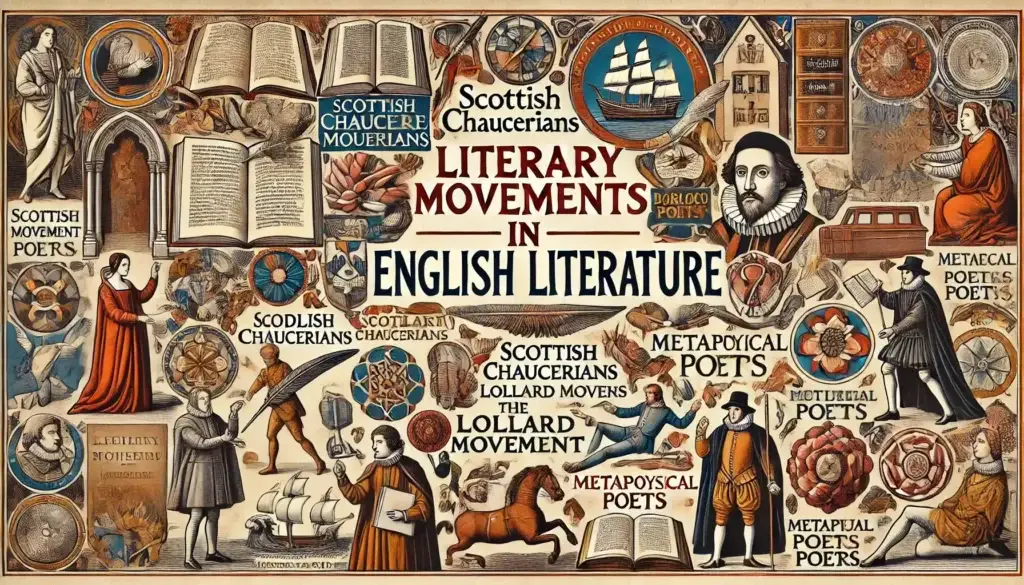Introduction
The Scottish Chaucerians were a group of poets in Scotland during the late 14th to early 16th centuries. They were inspired by Geoffrey Chaucer,popularly known as the father of modern English literature. We all know him for his magnum opus “The Canterbury Tales.”
Understanding the Scottish Chaucerians is essential for UGC NET students as they show how Chaucer’s ideas influenced Scottish literature.Historical background During the late 14th and early 15th centuries, Scotland was experiencing significant changes. This time, known as the Scottish Renaissance, saw a rise in literary activity which was influenced by the great English poet Geoffrey Chaucer. Chaucer introduced new storytelling methods and realistic characters in his work. The Scottish Chaucerians took inspiration from these ideas and adapted them to fit their own Scottish culture.
Key Scottish Chaucerians:
Robert Henryson (c. 1425–1500):
Henryson is one among the significant Scottish Chaucerians. He wrote poems such as “The Testament of Cresseid” and “The Morall Fabillis of Aesop,” which blends Chaucer’s storytelling style with Scottish themes. His work uses allegory and social commentary, much like Chaucer’s, but with a Scottish twist.
William Dunbar (c. 1460–1530) :
Dunbar was also an important poet who drew inspiration from Chaucer. His works, such as “The Dance of the Seven Deadly Sins” and “Lament for the Makaris,” use Chaucerian techniques in a Scottish context. Dunbar’s poems are known for their satire, vivid and vibrant language.
Gawin Douglas (c. 1474–1522):
Douglas is known for translating Virgil’s “Aeneid” into Scots. His work shows the influence of Chaucer’s methods and its impact is prevalent throughout his works. Douglas used Chaucerian storytelling in his own way by adding Scottish cultural elements to it.
Literary Characteristics and Influence
Though the Scottish Chaucerians used Chaucer’s ideas and styles but adapted them to reflect Scottish culture. They used Chaucer’s storytelling techniques, such as frame narratives and detailed characters, but wrote in Scots and focused on local issues. This reflects how Chaucer’s methods were modified to suit Scottish literature.Their work often included stories with hidden meanings ( i.e. allegory) and making fun of social issues (i.e. satire) similar to Chaucer’s style. However, they added their own Scottish perspectives, culture and themes so as to make their literature unique.
Conclusion
For UGC NET students, learning about the Scottish Chaucerians helps them in understanding how Chaucer’s influence spread beyond England. Poets like Robert Henryson, William Dunbar, and Gawin Douglas etc. took Chaucer’s ideas and made them their own, creating a distinct Scottish literary tradition. Their work shows how literary styles can change and adapt in different cultures, enriching world literature.

